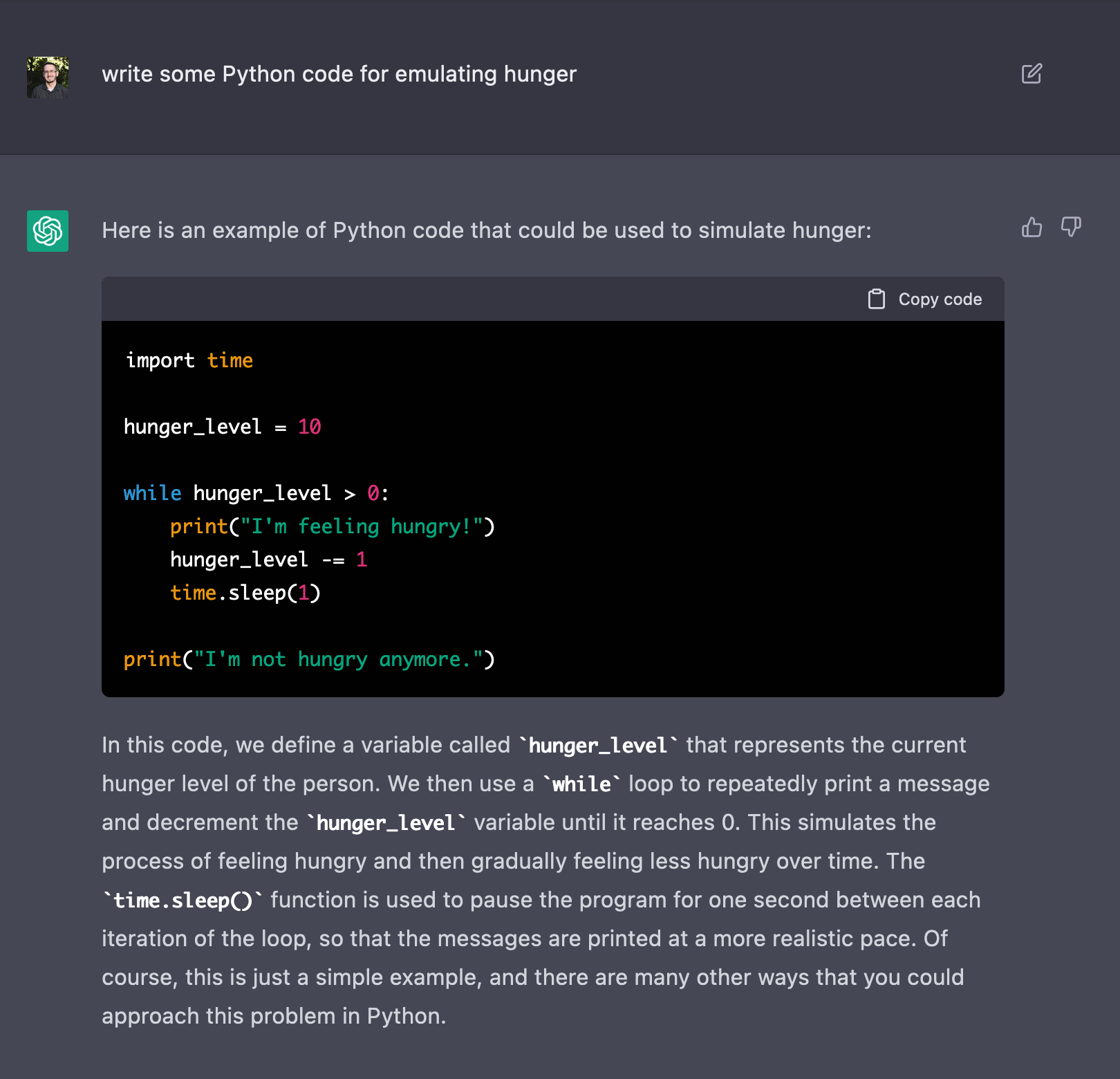Peer-Programming a Buggy World with ChatGPT AI
AI has been all the rage lately, with solutions like Stable Diffusion for image generation, GPT-3 for text generation, and CoPilot for code development becoming publicly available to the masses.
That excitement ramped up this week with the release of ChatGPT, an extremely impressive chat-based AI system leveraging the best GPT has to offer.
I decided last night to take ChatGPT for a spin, to test its code-generation capabilities. And I was astonished by the experience.
Together, we built a simulation of bugs foraging for food in a 100×100 grid world, tracking essentials like hunger and life, reproducing, and dealing with hardships involving seasonal changes, natural disasters, and predators. All graphically represented.
We’re going to explore this in detail, but I want to start off by showing you what we built:
Also, you can find out more on my GitHub repository
A Recap of my Experience
Before we dive into the collaborative sessions that resulted in a working simulation, let me share a few thoughts and tidbits about my experience:
…Peer-Programming a Buggy World with ChatGPT AI Read More »
